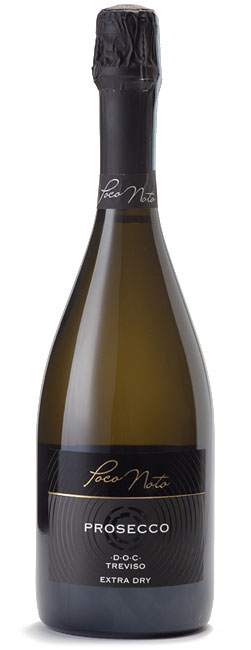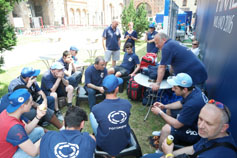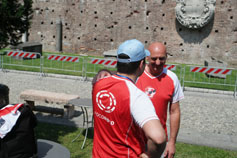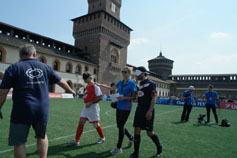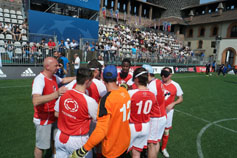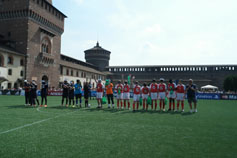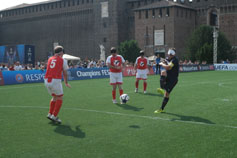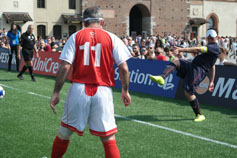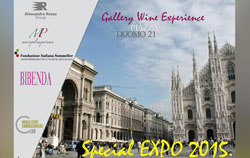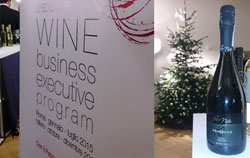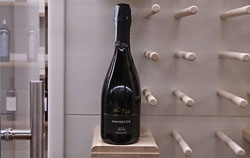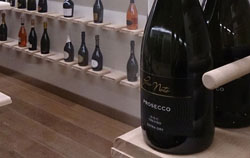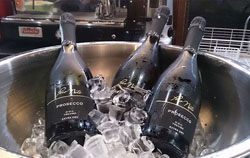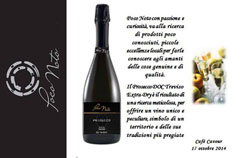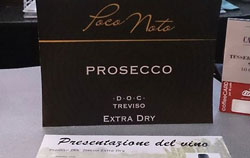Terroir
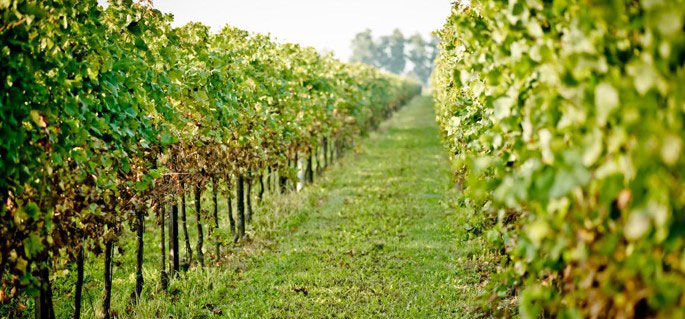
The Prosecco DOC is a superb summary of the combination of soils variety, mild climate and wine wisdom, passed down through generations.
The specific climate of this area, together with the soils composition and slopes exposure, makes this terroir ideal for viticulture.
The territory has not undergone remarkable changes and this allowed the preservation of the original soils, particularly suitable for the vine cultivation.
Despite the diversity of a relatively large area, the climate is generally temperate: the area is protected by the Alps to the North and warmed by the winds from Adriatic Sea, which mitigates the summer temperature and cause rains that promotes the vines development, to the East.
At the end of the summer, the area is characterized by high temperature variations between day and night, allowing the development of aromatic substances during the grapes ripening.
The alluvial soil, made of clay and silt, is rich in minerals and micro-nutrients, which gives more freshness and richness to the wine.
The vineyards used for the production of Prosecco DOC are located in:
-RIVE DI MERCATO VECCHIO or “RIVE DE MARCA VECIO”, a small town on the hills near Montebelluna;
-RIVE DI MORLIN, in Caerano di San Marco municipality
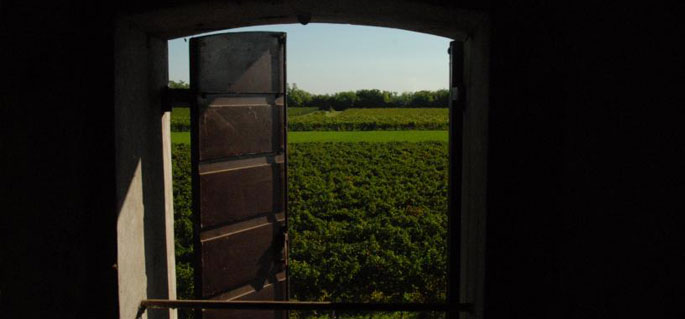
MONTEBELLUNA
Montebelluna is a borderland, dotted with countless castles and fortresses, considered the paleoveneta (early Venetian culture) city par excellence. Montebelluna was an important center, known for its strategic importance since ancient times, which hosts the main castle of the area. The surrounding area, spotted with Venetian villas, mills, irrigation works, describes a busy and productive past, which has bequeathed a thriving shoe industry. This ancient tradition is on display at the Museo dello Scarpone at Villa Binetti, the only one of its kind in Italy.
The Montebelluna origins go back to Paleovenetians, whose traces are collected in the Museum of Natural History and Archaeology at Villa Biagi. The Great War marked the area as well and, in Montello town, you can still find trenches, memorial stones and tombstones in memory of the battles and thousands of fallen.
PALIO DEL VECCHIO MERCATO
Even before 1000 A.D., Montebelluna inhabitants used to organize a market one Sunday a month. On that occasion, the merchants from Lombardy and Veneto loaded their goods on carts to carry them to the point of sale at the castle. To grab the best place, they competed to see who had arrived first at the market square and win would have therefore won a favourable position. This traditional "race" with the cart to conquer the best position relives once a year in the historic center of Montebelluna. During the race, the teams have to pull a farm cart loaded with local products along two kilometres uphill from the city hall leading to the Old Market.
CAERANO
Caerano, as Montebelluna, was the lordship of the Ezzelini family in the thirteenth century and its history is bounded to Ezzelini dynasty. In the fourteenth century Scaligeri took power, then, after complicated historical events, the city was ruled by Venice.
After that, the city experienced a period of economic and demographic development, perhaps thanks to the large hydraulic works for the channelling of the Brentella water from Piave river, commissioned by Venice.
The purpose of this great work was to meet the needs of the population: Irrigating the fields and having the necessary energy to move the millstones and the hammers of the factories.
Numerous small and large industries sprung on the banks of the main canal and many families moved to Caerano attracted by new job opportunities.
At the end of the nineteenth century, after a period of poverty, diseases and emigration, Caerano lived a timid awakening of the local farming community through the work of Catholic leaders. They experienced more productive farming systems and an agriculture school was founded for both men and women.
In this period, the local administrators worked to modernize the city and promote the development of the society. After the Second World War began a period of great economic and demographic boom.
History
The vine cultivation was introduced in the Veneto region by the Benedictine monks and was developed during the Republic of Venice.
The Benedictine monks settled in the Veneto region around 1000AD. Their work influenced the agricultural and winemaking history of the area, settling the deep vine and wine culture, which persists till nowadays.
During Roman times the Glera grapes, originally grown in the Prosecco town - near Trieste, were used to produce a wine called Puccino. In the eighteenth century, the cultivation of Glera has developed throughout the hills between Veneto and Friuli Venezia Giulia, expanding in neighbouring lowland areas in a short time. In the early twentieth century, Prosecco was created as we know it today, thanks to the new technologies in sparkling winemaking. In this area, in the last century, a specific technical and scientific expertise has developed, also thanks to the wine school of Conegliano Veneto, one of the oldest, which improved the production method for enhancing the unique characteristics of Prosecco.

